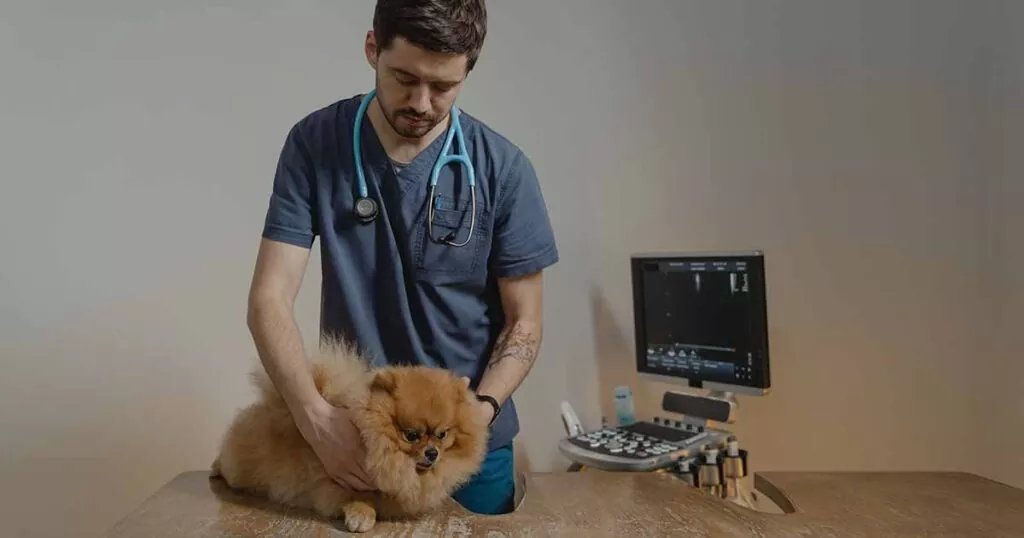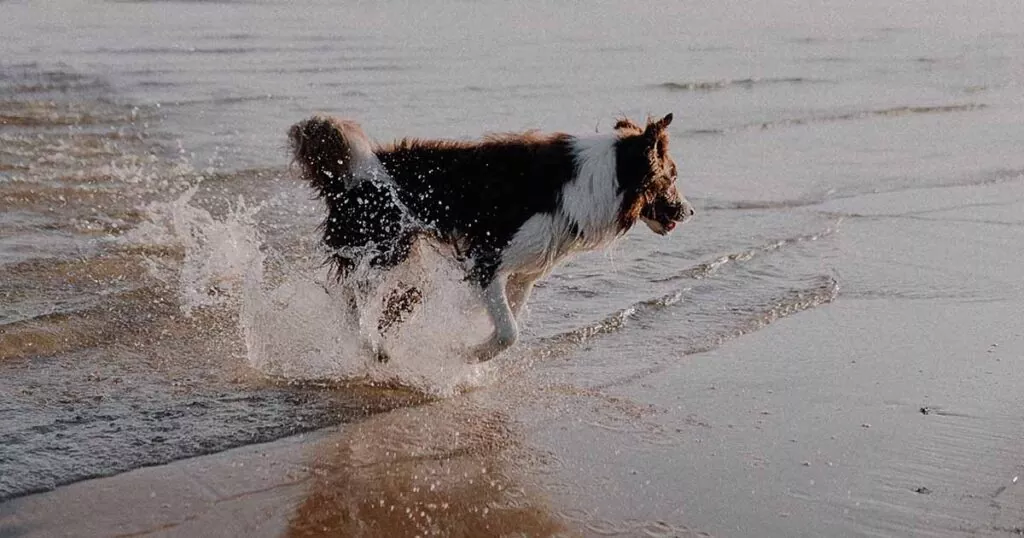
As pet owners, we all want the best for our furry companions. We feed them the highest quality food, give them plenty of exercise and play, and make sure they get regular checkups with their vet. But even with the best care, our pets can still get sick. One of the most severe illnesses for dogs is the parvovirus, commonly known as Parvo. Parvo is a highly contagious virus that attacks the gastrointestinal tract, and in extreme cases, it can lead to death if left untreated. I know how terrifying it is to have a sick pet, which is why I’ve put together this article to provide pet owners with the facts about Parvo, how to spot the symptoms, the best ways to prevent infection, and what you must do if your dog shows signs of this virus. Forewarned is forearmed, so read on to learn everything you need to know to keep your pup healthy and parvo-free.
What Is Parvo? Understanding This Serious Virus
Parvo is a highly contagious virus that affects dogs, causing severe vomiting and diarrhea. As a pet owner, it’s essential to understand this disease and take steps to prevent infection.
Parvovirus is spread through contact with infected feces, whether directly or on surfaces, shoes, hands, etc. The virus can live in the environment for months and is resistant to many disinfectants.
### Symptoms of Parvo
The main symptoms to watch for are lethargy, loss of appetite, and gastrointestinal problems like diarrhea and vomiting. Parvo also attacks the heart muscle in puppies, which can lead to death if left untreated.
If your dog shows any signs of Parvo, contact your vet immediately for diagnosis and treatment. They will check for the virus in your dog’s feces and may need to do blood tests or take x-rays of the abdomen to determine the severity of the infection.
Prevention Strategies
The best way to prevent Parvo is through vaccination. Puppies should receive a series of vaccinations, with the final dose usually given around 16-20 weeks of age. Adult dogs need booster shots to maintain immunity.
It would be best to practice good hygiene, like washing hands after being outside, cleaning up after your dog, and disinfecting any areas where they go to the bathroom. Limit your dog’s exposure to high-risk areas like dog parks, shelters, and boarding kennels until fully vaccinated.
Parvo is a scary disease, but with vigilance and responsible pet ownership, you can help stop this virus and keep your furry friend safe and healthy for life. Stay on schedule with vet checkups and vaccinations and call right away if you notice any symptoms. Our dogs depend on us, so we must do all we can to protect them!
Recognizing the Symptoms of Parvo in Dogs
As a dog owner, my top priority is keeping my furry friend happy and healthy. That’s why identifying the symptoms of Parvo early on is so important. Parvo, or canine parvovirus, is a highly contagious virus that attacks puppies’ gastrointestinal tract and cardiovascular systems.
The first sign is usually lethargy. If my pup isn’t running to greet me at the door or doesn’t seem interested in playing, that’s worrying. Next comes a loss of appetite. Is my hungry little guy turning down treats? Very strange. Vomiting and diarrhea follow soon after, and because Parvo causes severe dehydration, I watch for signs like dry nose and gums, sunken eyes, and reduced skin elasticity.
Other symptoms may include bloody or foul-smelling stool, abdominal pain, and heart problems like arrhythmia. Parvo is life-threatening if left untreated, so if I notice any combination of these symptoms in a puppy, especially a young one, I rush to the vet immediately.
Preventing Parvo is always better than treatment. Making sure my puppy’s vaccines are up to date, properly socializing them at a young age, keeping them away from areas where unvaccinated dogs frequent, and maintaining good hygiene, like picking up waste and washing hands, are all effective strategies.
As a devoted dog lover, being proactive and staying informed about diseases like Parvo will help ensure my pup lives a long, happy, and healthy life by my side for years to come. If you suspect Parvo, call your vet right away – your puppy’s life depends on it! Early detection and treatment provide the best chance of survival.
Prevention Strategies: How to Protect Your Dog From Parvo
As a pet lover, protecting your furry friend from Parvo should be top of mind. The good news is there are several effective prevention strategies you can take to safeguard your dog from this awful virus.

Caring for Your Canine: 10 Essential Pet Care Tips for Dogs – (panotopics.com)
Vaccinate on schedule
The parvo vaccine is considered a “core” vaccine, meaning all puppies should receive a series of shots according to a standard schedule. I make sure my vet administers the parvovirus vaccine at 6, 8, 12, and 16 weeks of age. These early boosters are critical to building up immunity. Even after the initial series, it’s important to keep your dog up to date with annual boosters to maintain protection.
Practice good hygiene
Simple things like washing your hands, sanitizing your shoes and equipment, and isolating new dogs can help curb the spread of Parvo. I wash up as soon as I come inside and ask all family members and visitors to do the same. I also spray down leashes, food bowls, crates, and anything else my dog uses with a disinfectant containing bleach before allowing a new dog access.
Avoid high-risk areas
Places that many dogs frequent, like parks, pet stores, and grooming salons, increase the chance of exposure. Until a puppy has received all their vaccinations, it’s best to steer clear of these areas. I don’t take my dog to public places until he’s had at least 2 rounds of shots. Even then, exercise caution until the full series is complete.
Act quickly if symptoms appear
Although prevention is best, if your dog shows any signs of Parvo like lethargy, loss of appetite, fever, or bloody diarrhea, call your vet immediately. The earlier Parvo is detected and treated, the better the prognosis. I know how scary this disease can be, but with diligent prevention and quick action, we can overcome Parvo together. Our fur babies are worth it!
What to Do if Your Dog Gets Parvo – Treatment Options
If your dog shows symptoms of Parvo, quick action is critical. As a pet owner, it’s important to know the steps to take right away to get your pup the treatment they need.
Take your dog to the vet immediately.
The moment I notice lethargy, vomiting, or bloody diarrhea in my dog, I rush them to the animal hospital. Early diagnosis and aggressive treatment are key to survival. The vet will test for Parvo and begin emergency care if positive, including IV fluids to combat dehydration, antibiotics, anti-nausea medication, and other supportive care.
Hospitalization may be required.
Depending on the severity of symptoms, the vet may recommend hospitalizing your dog for several days. Around-the-clock care and monitoring are often needed to stabilize infected puppies and dogs. I know hospitalization can be expensive, but it truly gives them the best chance of overcoming this awful virus.
Strict isolation is necessary.
To avoid spreading the infection, parvo dogs must be kept in strict isolation. The virus is highly contagious and can live in the environment for months. I ask friends and family to avoid visiting, and I’m very careful to practice good hygiene like hand washing, showering, and changing clothes when coming in from outside before visiting my sick dog.
Recovery can take weeks.
With aggressive treatment, survival rates for Parvo can be 80-95%, but recovery is lengthy. Hospital discharge usually comes after 3-7 days, but convalescence at home can last 2-4 weeks in total. I continue the vet’s at-home care plan, provide extra love and attention, and slowly re-introduce bland foods as appetite returns. Follow-up vet checks also help ensure full recovery.
By acting fast, providing the recommended treatment, and patiently supporting your dog during weeks of recovery, you absolutely can nurse them back to health after a parvo infection. Staying positive through the difficult experience will make you both stronger in the end. With time and care, you’ll be playing together again in no time!
Recovering After Parvo: Caring for Your Dog Post-Infection

Recovering from Parvo is tough, but with proper care and time, dogs can get through it. Once your pup comes home from the vet, it’s essential to keep a close eye on them during recovery. Their immune system will still be weakened, so vigilance and TLC are key!
Follow the Vet’s Instructions Carefully
The vet will give you medications and probiotics to continue at home; be sure to administer them as directed. Keeping your pup hydrated and fed is critical. Offer small amounts of bland, easy-to-digest food and water frequently throughout the day. I gave my dog Pedialyte every couple of hours with a syringe to keep her hydrated.
Provide a Quiet, Clean Space
Dogs recovering from Parvo need rest, so set up a confined area away from other pets. Disinfect this space thoroughly since Parvo can live in the environment for months. I scrubbed everything in my spare room with bleach where my dog stayed. Change bedding daily and wash separately from other laundry.
Monitor Your Dog Closely
Watch for signs of dehydration or worsening symptoms, and call your vet right away if concerned. Take your dog’s temperature, respiration, and stool samples as directed. I checked on my pup around the clock, setting alarms to give her meds and take vitals. The first week was rough, but her improvement kept me going!
Be Patient Through Recovery
It can take dogs 2-4 weeks to recover from Parvo. Appetite and energy will return gradually. My dog started playing again after 10 days, but it was 3 weeks before her stool firmed up, and she could go for short walks. Through it all, give your dog lots of love and encouragement – your support will help them heal! Recovery is challenging but rewarding. With time and care, your dog can beat this! Stay positive, follow medical advice, and continue monitoring even after symptoms improve. Before you know it, your energetic, playful pup will be back to its usual self. The fight will have been worth it!
Conclusion
With knowledge comes power, and now that you understand the dangers of parvovirus and how it can affect our furry family members, you have the power to help prevent infection. By following recommended vaccination schedules, properly cleaning up after our pets, and avoiding exposure to feces from unknown dogs, we can work together to stop Parvo in its tracks. If we all do our part, someday, Parvo may become a thing of the past. Our pets give us so much unconditional love and joy, so they deserve our protection in return. Stay vigilant, spread the word, and keep those tails wagging! We’ve got this, fellow pet lovers. Together, we will beat Parvo.
